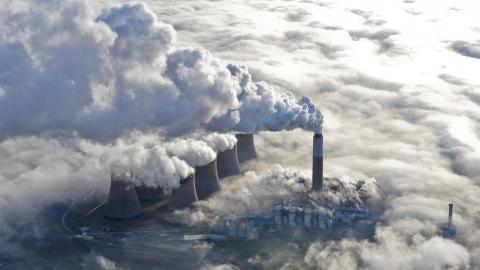In 2018 alone, world aviation produced 1.04 billion tons of carbon dioxide, or 2.5 percent of all CO2 emissions in that year.
Global air travel has taken a hit due to the raging coronavirus pandemic that has changed the world and it is not expected to return to pre-covid levels again until 2024. Despite a historic 60 percent drop in world flights this year, it is still recovering.
The International Air Transport Association (IATA) estimates that nearly 7.8 billion air travelers will travel to the air in 2036. For now, it’s a breakthrough by Carbon Sciences, an alternative fuel company, that will increase profits while dramatically reduce climate emissions.
This is critical because of the amount of carbon emissions that aviation as a whole produces. The carbon footprint of one person flying one-way flights from Istanbul and New York, for example, is staggering 1.3 tons. To prevent global warming from continuing, the maximum amount of carbon dioxide a person can produce per year varies from 0.6 to 1.5 tons of CO2 per year.
Carbon Sciences claims that it has done pioneering work in the method of using carbon dioxide (CO2) emissions to create the necessary fuels such as gasoline and jet fuel. If their method can demonstrate the ability to scale efficiently and cost-effectively, it could revolutionize the energy industry by delivering renewable energy-based fuels while reducing global carbon footprint.
“We are very excited about our new process of converting CO2 into fuel,” said Derek McLeish, CEO of the company. “Based on our research so far, we believe we will be able to demonstrate our technology within the next few months with a prototype that can convert a stream of CO2 into an instantly flammable liquid fuel.”
Runaway warming
As the effects of globalization and a growing middle class around the world are felt, the demand for air travel is growing significantly. This presents serious challenges for the environment. The aviation industry is expected to consume more than 25 percent of the remaining carbon dioxide emissions that humanity can produce by 2050, while global warming is no more than an additional 1.5 degrees Celsius.
But why is it so important to keep global warming below 1.5 degrees Celsius?
The UN’s Intergovernmental Panel on Climate Change reports that global warming below 1.5 degrees Celsius has already doubled the normal temperature over the Arctic. More dangerously, it reports that the current warming has already contributed to more intense and frequent weather extremes.
Breakthrough
Carbon Sciences has developed a leading method of converting CO2 into fuel, but this is led by an iron catalyst containing elements of potassium and manganese, hydrogen and citric acid. The CO2 and the catalyst are heated to 350 degrees Celsius, which forces a carbon atom to separate from the two oxygen atoms, after which it is bound with hydrogen to produce a hydrocarbon. CO2 is very stable and requires so much heat and pressure to break down, that it was not previously cost effective to tackle it. But Carbon Sciences claims he has solved the problem.
Hydrocarbons are known to be the most important constituents of fossil fuels. When burned, they produce heat and release carbon dioxide.
The more carbon in a fuel, the more heat it produces. Gasoline, for example, has seven to ten carbon atoms in its molecular chain. Aircraft fuel has 10 to 16.
In 20 hours, the new process converted 38 percent of the CO2 in a room under pressure into jet fuel. The jet fuel itself accounted for only 48 percent of total production, with the remaining 52 percent coming from water, propylene and ethylene.
The jet fuel would be carbon neutral because it would release the same amount of CO2 it made.
Most importantly, Carbon Sciences claims that their method would actually be cheaper than other means of producing jet fuel, especially electricity-intensive processes that convert hydrogen and water into fuel.
Carbon Sciences does not plan to set up a filter in the air to collect CO2. Instead, they want to install it next to oil refineries and coal-fired power plants and capture the CO2 they produce.
Source: TRT World
